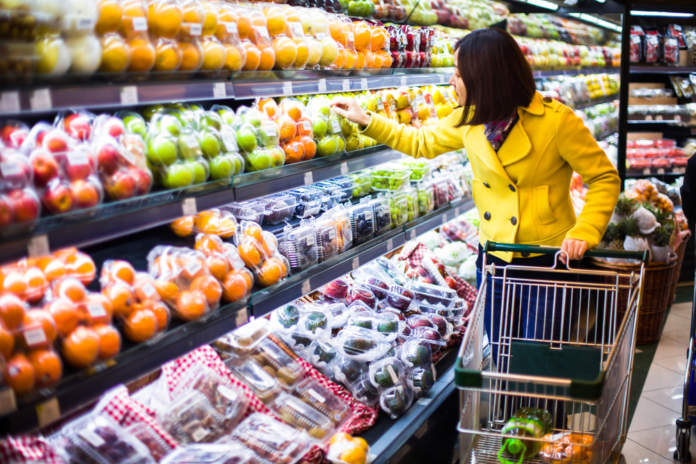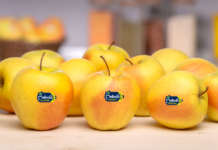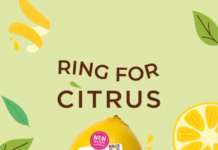Poteva non partire dal tema del momento, quello della ricerca della convenienza, il nuovo numero (il 13esimo) dell’Osservatorio Immagino, il report semestrale di GS1 Italy che incrocia le informazioni presenti sulle etichette e i dati di vendita di oltre 132mila prodotti confezionati di largo consumo (ortofrutta compresa, di cui monitora i prodotti che sviluppano il 34% delle vendite del reparto di supermercati e ipermercati)? Proseguendo l’approfondimento già avviato nella precedente edizione, ora questo strumento riesce a fornire un’analisi più ampia sulla vastità, le declinazioni e i risultati del nuovo approccio alla spesa che ha caratterizzato il 2022, e che (ovviamente) coinvolge anche il mondo dell’ortofrutta. Il primo dato interessante è che convenienza è diventata un tema di comunicazione anche sulle etichette dei prodotti di largo consumo, food e non food. Il 5,0% delle referenze rilevate in quest’edizione dell’Osservatorio Immagino segnalano, infatti, on pack almeno un’indicazione che ne sottolinea i vantaggi in termini di risparmio o, comunque, di rapporto qualità/prezzo, con indicazioni come “formato scorta” oppure “xx di prodotto in omaggio”.
A presentarsi come “convenienti” sono stati, dunque, 6.696 prodotti che nel 2022 hanno generato il 6,7% del giro d’affari complessivo realizzato dal grocery rilevato. Puntare sulla loro convenienza non ha dato particolare slancio alle vendite, visto che hanno perso l’11,4% a volume rispetto al 2021. Niente di nuovo sotto il sole: l’aumento dei prezzi ha provocato un generalizzato calo delle quantità acquistate dagli italiani. E questo comportamento ha coinvolto anche i formati convenienza che, pur avendo un miglior prezzo euro/kg-litro, hanno comunque una battuta di cassa più elevata per la maggiore quantità di prodotto offerta. Sembra che sia dunque più la battuta di casa che la convenienza di prezzo al kg/litro a far decidere cosa mettere nel carrello della spesa. Infatti gli scontrini si sono fatti più corti ma anche più frequenti perché gli italiani comprano meno (e fanno più attenzione a evitare gli sprechi) ma vanno più spesso al supermercato o all’ipermercato. Un atteggiamento che, nel paniere convenienza delineato dall’Osservatorio Immagino, riguarda soprattutto i prodotti di fascia più bassa, quella dove i volumi sono calati di più (-15,4% rispetto al -10,8% della fascia media) mentre nella fascia più alta il calo è più contenuto (-3,9%), a riprova che a soffrire di più dell’inflazione sono le parti più deboli della popolazione, la cui unica alternativa al carovita è l’alleggerimento del carrello della spesa. scontano l’inflazione comprimendo i consumi, non potendo convertirli.
C’è da dire che, nell’ortofrutta, il fenomeno della convenienza segnalata in etichetta è meno pregnante rispetto al grocery in generale: solo il 2,0% dei prodotti confezionati presenta in etichetta un claim legato alla convenienza e il loro contributo al fatturato globale si ferma all’1,6%. Interessante, però, il trend annuo: con un aumento del 12,2% del giro d’affari sviluppato in supermercati e ipermercati, l’ortofrutta è stato uno dei comparti a maggior crescita nell’area della convenienza comunicata, superato solo dalle carni e dai surgelati. Un risultato ancora più rilevante se si considera che è stato raggiunto nonostante il calo del 5,5% dei volumi venduti. In ogni caso, gli item con indicazioni di convenienza che hanno offerto un formato più grande, hanno mostrato di essere graditi soprattutto a nuclei familiari più allargati.
L’attenzione al budget (ma anche la concorrenza di nuovi valori, come la filiera o le certificazioni green) è una delle ragioni che concorre alla crisi del biologico, le cui vendite sono calate del 9,4% a volume e del 2,3% a valore rispetto al 2021 (e le verdure sono state tra i comparti che hanno sofferto di più). Il bio resta sovrallocato nella fascia alta di prezzo (verdure comprese), colpita come quella più bassa dai cali delle vendite. •
—
Search for convenience, starting from the label
The 13th issue of GS1’s Immagino Observatory analysed the new approach to spending that characterized 2022, including fruit and vegetables
Could not the new issue (the 13th) of Immagino Observatory, the six-monthly report by GS1 Italy that combines the information on the labels and the sales data of over 132,000 packaged products, start from consumption (including fruit and vegetables, of which it monitors the products that develop 34% of the sales of the supermarkets and hypermarkets)? Continuing the in-depth study already started in the previous edition, this tool is now able to provide a broader analysis of the vastness, declinations, and results of the new approach to spending that characterized 2022, and which (obviously) also involves the world of fruit and vegetables. The first interesting fact is that cost-effectiveness has become a communication theme also on the labels of food and non-food consumer products. In fact, 5.0% of the references surveyed in this edition of Immagino Observatory show on pack at least one indication that underlines its advantages in terms of savings or, in any case, in terms of quality/price ratio, with such indications as ‘saving size’ or ‘xx of free product’. Therefore, 6,696 products that in 2022 generated 6.7% of the overall turnover achieved by the recorded grocery items presented themselves as ‘cost-effective’. Focusing on their cost-effectiveness did not give a particular boost to sales, given that they lost 11.4% in volume compared to 2021. Nothing new under the sun: the price increase has caused a generalized decline in the quantities purchased by Italians. And this behaviour has also involved the cost-effective sizes, which, despite having a better price Euro/kg-litre, still have a higher cash flow due to the greater quantity of product offered.
It therefore seems that it is more the cash flow than the cost-effectiveness in terms of price per kg or litre that makes decide what to put in the shopping cart. In fact, receipts have become shorter, but also more frequent, because Italians buy less (and pay more attention to avoiding waste), but go to the supermarket or hypermarket more often. This attitude, in the cost-effective basket outlined by Immagino Observatory, mainly concerns lower-end products, the ones where volumes have dropped the most (-15.4% compared to -10.8% in the medium range), while in the higher end the drop is more contained (-3.9%), proving that the weakest sections of the population suffer the most from inflation, and the only alternative to the high cost of living consists in reducing the products in the shopping cart. These people face inflation by squeezing consumption, not being able to convert it.
It must be said that, as for fruit and vegetables, the phenomenon of cost-effectiveness indicated on the label is less significant than in grocery in general: only 2.0% of packaged products have a claim linked to cost-effectiveness on the label and their contribution to global turnover stops at 1.6%. However, the annual trend is interesting: with an increase by 12.2% in turnover developed in supermarkets and hypermarkets, fruit and vegetables were one of the fastest growing sectors in the area of communicated cost-effectiveness, surpassed only by meat and frozen foods. This result is even more significant if we consider that it was achieved despite the drop by 5.5% in volumes sold. In any case, the items with indications of cost-effectiveness that have offered a larger size proved to be appreciated above all by larger families.
Attention to the budget (but also competition from new values, such as supply chain or green certifications) is one of the reasons that contributes to crisis concerning organic productions, whose sales have dropped by 9.4% in volume and by 2.3% in value compared to 2021 (and vegetables were among the sectors that suffered the most). Organic productions remain overstated in the high price range (vegetables included), affected as the lowest one by drop in sales.
Virtuous packaging
Fruit and vegetables shine for communication on the label concerning sustainability of the packaging in which they are sold. If almost 45 products out of 100 of the 132,829 surveyed by Immagino Observatory offer an indication to help consumers correctly recycle packaging after use (+4.5% compared to 2021), in fruit and vegetables this percentage is decidedly higher: 57.4% of packages, with an increase by 2.3% compared to previous year. If we read this situation from the weighted point of view (i.e. the weight on sales in value), the figure rises to 77.3% compared to 74.0% in 2021.
Looking at the prominent characteristics of packaging, in 94 cases out of 100 we are talking about largely or totally recyclable products. Furthermore, even in 2022, fruit and vegetables confirmed to be the product area in which mono-material packaging is most used (66.5% of references).










